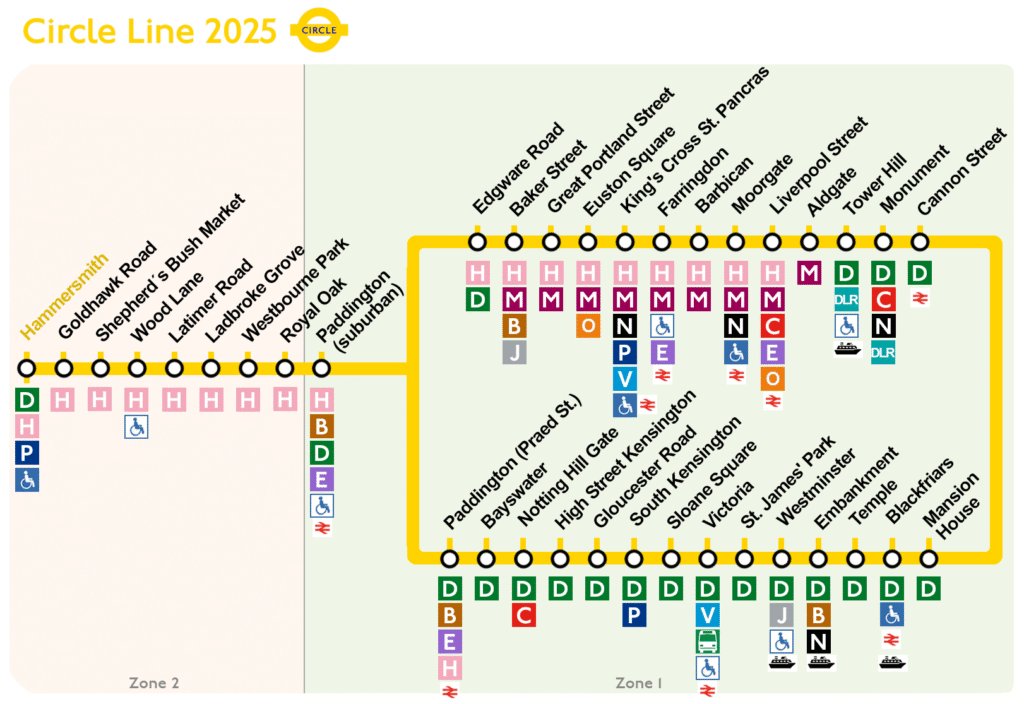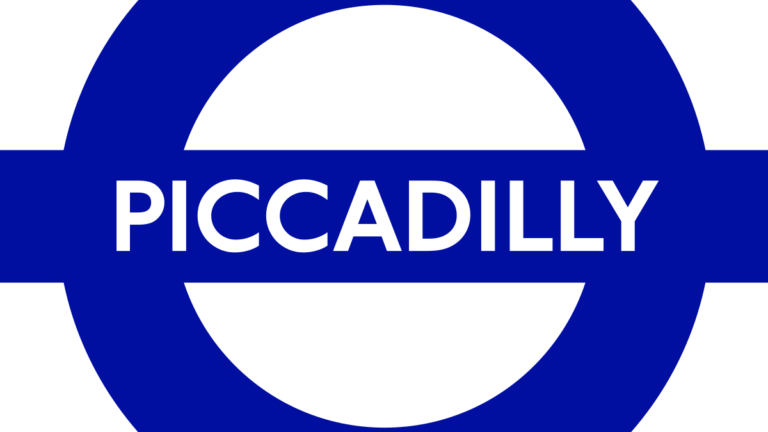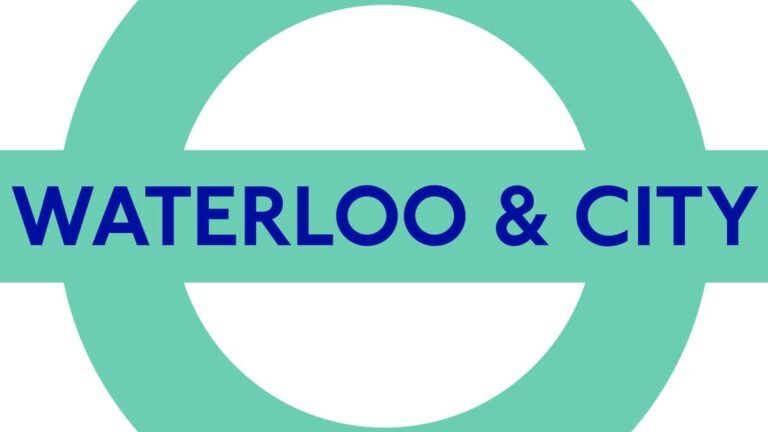The Circle Line map is one of the most iconic routes on the London Underground, known for its yellow-colored loop on the Tube map. Unlike other lines, it forms a continuous ring around Central London, connecting major hubs like King’s Cross, Paddington, and Victoria.
including:
✔ Circle Line Overview – Why it’s unique & how it operates
✔ All Stations on the Circle Line – Key stops & interchanges
✔ Map and Route of the Circle Line – Full loop breakdown
✔ Circle Line London Timetable – First/last trains & frequency
✔ Interesting Facts About the Circle Line – Secrets even locals don’t know
Plus, we’ll answer burning questions like:
- Is the Circle Line really a circle?
- What’s the difference between eastbound and westbound?
- Why does it share tracks with other lines?
By the end, you’ll master this essential Tube line—whether you’re a commuter, tourist, or trivia lover!

Circle line map
1. Circle Line Map Overview: London’s Looping Landmark
A. Key Facts
- Color on Tube map: Yellow
- Opened in 1884 (one of the oldest Underground lines)
- Stations served: 36 (forming a loop around Zone 1)
- Length: 27 km (17 miles)
- Daily ridership: Over 400,000 passengers
B. Why Is the Circle Line Special?
✔ Not actually a full circle (since 2009, it’s a spiral!)
✔ Shares tracks with District, Hammersmith & City, and Metropolitan lines
✔ Serves all major London rail terminals (Paddington, King’s Cross, Victoria)
C. Unique Challenges
- No true “eastbound/westbound” (trains alternate directions)
- Frequent delays (due to shared tracks)
- Short platforms (only 6-car trains)
2. Stations on the Circle Line Map: Full List & Key Interchanges
The Circle Line serves 36 stations, but these are the most important ones:
West London (Paddington to Notting Hill)
| Station | Key Connections | Nearby Attractions |
| Paddington | Elizabeth, Bakerloo, National Rail | Hyde Park |
| Bayswater | – | Kensington Palace |
| Notting Hill Gate | Central Line | Portobello Market |
South London (High Street Kensington to Tower Hill)
| Station | Key Connections |
| Victoria | Victoria, District, National Rail |
| Embankment | Northern, Bakerloo |
| Tower Hill | District, DLR |
East London (Aldgate to Edgware Road)
| Station | Key Connections |
| Liverpool Street | Central, Elizabeth, Overground |
| King’s Cross St. Pancras | 6 other Tube lines |
Key Interchanges: circle line tube map
- King’s Cross St. Pancras (most connected station in London)
- Baker Street (for Jubilee, Metropolitan lines)
- Edgware Road (split for Hammersmith & City line)
3. Map and Route of the Circle Line Map: How It Works

A. Route Breakdown: The Evolution of london underground circle line map
Pre-2009 (True Circle Era):
- Endless Loop: Trains ran continuously from Edgware Road → Edgware Road in 58 minutes, creating a perfect circle.
- Ghost Train Problem: Late-night services would sometimes circle for hours with no passengers, waiting for depot access.
- Operational Chaos: A single delay would ripple across the entire loop, causing “bunching” of trains.
Post-2009 (Spiral System):
- New Terminals: Extended to Hammersmith (west) and Edgware Road (east), breaking the circle into a spiral-shaped route.
- Why the Change?
- Improved reliability by eliminating infinite loops.
- Added service to Hammersmith (connecting to 4 other lines).
- Reduced congestion at Edgware Road, the former bottleneck.
- Current Travel Time: 72 minutes end-to-end (Hammersmith → Edgware Road via King’s Cross).
🚉 Pro Navigation Tip:
- Digital Displays show either:
- 🔄 “Via Victoria” (Clockwise – best for Westminster/South Kensington)
- 🔄 “Via High Street Kensington” (Anti-clockwise – fastest to Paddington)
- Avoid Confusion: Some trains terminate early—always check the front display before boarding.
B. Best Journeys: Strategic Routing
| Journey Type | Route | Key Stops | Time Saved vs Walking | Why It’s Smart |
| Tourist Trail | Westminster → Tower Hill → King’s Cross | Big Ben (5min walk), Tower of London (direct), Platform 9¾ (7min walk) | 38 minutes | Avoids multiple line changes. |
| Business Sprint | Liverpool St → Paddington | Connect to Heathrow Express in 11 mins (vs 25min via Central Line) | 14 minutes | Beats taxi traffic in rush hour. |
| Hidden Gem | Gloucester Road → Bayswater | Skip crowded Piccadilly Line to reach Notting Hill | 9 minutes | Secret shortcut to Portobello Market. |
💡 Insider Hack:
- For Harry Potter fans, take the Circle Line to King’s Cross, then walk 7 mins to Platform 9¾.
- For Heathrow connections, switch to the Hammersmith branch for a faster route to Paddington.
C. Map Quirks: Engineering Oddities
📍 Station Spacing Extremes:
- Shortest Hop:Aldgate → Tower Hill (0.3 miles)
- Why? Built by rival railway companies in the 1880s, who refused to share stations.
- Fun Fact: You can see one train pulling out as the next arrives.
- Longest Gap:Edgware Road → Paddington (1.2 miles)
- Secret Reason: Avoiding costly tunneling under Hyde Park.
- Pro Tip: This stretch is fully underground but shallow—great for avoiding rain.
🚇 Hidden Geometry:
- The line forms a “lazy figure-8” when mapped (not a perfect circle).
- Sharpest Curve: Between Paddington and Edgware Road (tightest on the entire Underground).
- Only Line that crosses itself twice (at Paddington and King’s Cross).
🔍 Look Out For:
- The abandoned platform at Bishopsgate (visible between Liverpool St and Aldgate).
- Original 1863 brick arches at Farringdon (London’s oldest stretch of Underground).
Next time you ride:
- Spot the WWII-era signage at Aldgate.
- Count the seconds between Aldgate and Tower Hill (shortest hop!).
- Listen for the unique “ding-dong” announcement—only on Circle Line trains!
4. Circle Line London Timetable: When Does It Close?
A. Regular Hours
- Monday to Saturday: 5:00 AM – 12:30 AM
- Sunday: 6:30 AM – 11:30 PM
B. Last Trains (Key Stations)
| Station | Last Train “Via Victoria” | Last Train “Via High St Kensington” |
| Victoria | 12:20 AM | 12:25 AM |
| King’s Cross | 12:30 AM | 12:35 AM |
C. Night Tube?
❌ No, but 24-hour buses run similar routes.
5. Interesting Facts About the Circle Line: London’s Misunderstood Loop
A. Secret History: More Than Meets the Eye
🔹 The Original “Inner Circle” (1884-1949)
- Designed to connect London’s 7 main rail terminals (Paddington to Liverpool Street)
- First section opened with wooden carriages pulled by steam locomotives (soot-filled tunnels!)
- Earned the nickname “The Railway of the Dead” for passing near multiple cemeteries
🔹 WWII: The Underground Fortress
- Aldgate Station secretly housed a Churchill government bunker
- Bayswater platform stored priceless art from the V&A Museum during the Blitz
- Workers slept in hammocks strung between tracks during overnight bombing raids
B. The Circle That Wasn’t: A Geometry Mystery
🚫 Why the Spiral?
- Pre-2009: True circle caused “ghost trains” getting stuck in infinite loops
- Modern Fix: Hammersmith branch added to:
- Reduce congestion at Edgware Road
- Allow trains to reverse efficiently
- Fun Test: Try drawing the actual route without lifting your pen!
C. Hollywood’s Favorite Tube Line
🎬 Skyfall (2012) Secrets:
- The “Temple Station” fight was filmed at Charing Cross (with fake signage)
- Daniel Craig actually rode the Circle Line to research his role
🧸 Paddington Movie Magic:
- The “flooding tunnel” scene used a disused Circle Line platform at Notting Hill Gate
- Real Circle Line trains appear during the station chase sequence
💡 Bonus: Mind the (Artistic) Gap
- The line’s distinctive yellow was chosen because:
- It’s the only color never used by mainline railways
- Matched the golden circle of London’s historic coat of arms
- Architectural Quirk: All Circle Line stations have unique tile patterns – spot the:
- Royal crests at Sloane Square
- Nautical themes at Monument
Next time you ride: Look for the original 19th-century ventilation shafts disguised as buildings above stations!
6. How It Compares to Other Tube Lines
🚇 Circle Line: London’s Landmark Loop
| Feature | Circle Line | Average Tube Line |
| Stations | 36 (All in central Zones 1-2) forming a loose spiral | Typically 25-40, often linear routes |
| Depth | Shallowest network (Most stations <10m deep with cut-and-cover tunnels) | Mix of deep-level (e.g. Northern) and sub-surface |
| Speed | Slowest (20.5 km/h) due to:• Shared tracks with 3 other lines• Tight curves at Edgware Rd/Paddington | 25-35 km/h (dedicated lines like Victoria) |

💡 Unique Advantages
✔ Tourist Superhighway
- Connects 8 UNESCO World Heritage Sites in one ride:
• Tower of London → Westminster → Kensington Museums - Only line serving all central London rail terminals
✔ All-Weather Reliability
- Fully underground (no weather disruptions)
- Platform hump design allows level boarding (unlike deep tubes)
✔ Strategic Transfers
- Paddington → King’s Cross in 15 mins (vs 25min walk)
- Liverpool St → Victoria without entering ticket halls
⚠️ Operational Quirks
- Not Actually Circular
• Technically a spiral with 2 tails (Hammersmith/Edgware Rd)
• Trains alternate directions – check displays carefully - Congestion Hotspots
• Edgware Road junction causes 40% of delays
• Shared with District/H&C lines – peak hour gaps up to 10 mins - No Future Upgrades
• Oldest infrastructure (1863) limits improvements
• Night Tube technically impossible due to shared tracks
Pro Tip: Use between 10am-4pm when tourist crowds thin out. For serious commuting, the Elizabeth Line parallels much of its route faster.
7. FAQs (Quick Answers)
Q: What time does the Circle Line close?
A: 12:30 AM (1 AM on Fridays/Saturdays for Night Tube).
Q: Is there an eastbound/westbound?
A: No—trains alternate directions (“Via Victoria” or “Via High St Kensington”).
Q: Why does it share tracks?
A: Historic cost-saving (built alongside other lines).
8. Travel Hacks for the Circle Line
🚇 Mastering London’s Loop Line
The Circle Line may be slow, but it’s unbeatable for strategic connections. Use these pro tips to ride smarter:
| Hack | Why It Works |
| ✔ Check Train Displays | Routes alternate between “Via Victoria” (clockwise) and “Via High St Kensington” (anti-clockwise) – board the right one! |
| ✔ Avoid Rush Hour (7:30-9:30 AM) | Shared tracks with District/Hammersmith lines cause frequent delays during peaks |
| ✔ Rail Terminal Shortcut | Best for transfers between:• Paddington ↔ King’s Cross (15 mins)• Liverpool St ↔ Victoria (avoiding Zone 1) |
💡 Bonus Tricks
- Tourist Hack: Perfect for hopping between landmarks (Tower Hill → Westminster → South Kensington museums)
- Seat Strategy: Board at terminals (Edgware Road/High St Kensington) for guaranteed seats
- Weekend Warning: Frequent part-closures – always check TfL alerts
Next time you ride: Treat it as a scenic connector, not an express route!
Final Verdict: Love It or Hate It?
✅ The Circle Line’s Strengths
✔ Iconic Landmark Hopper – Perfect for tourists hitting Tower Hill, Westminster, and South Kensington museums in one loop
✔ Terminal Connector – Best for Paddington ↔ King’s Cross transfers (15 mins, no Zone 1 congestion)
✔ Seat Guarantee – Board at Edgware Road or High St Kensington for empty trains
⚠️ Brutal Truths
- Slowest Tube Line (Average speed: 20.5 km/h vs. Jubilee’s 35 km/h)
- Shared Track Delays – Frequently held up by District/Hammersmith Line traffic
- No Night Tube – Last trains depart by 12:30 AM
💡 Pro Wisdom
Treat it as a scenic bypass for rail terminals and landmarks—not for speed.
✅ Perfect for tourists—but commuters should mind the delays!
Next time you ride, spot the original 1884 tiles at Baker Street! 🚇💛






